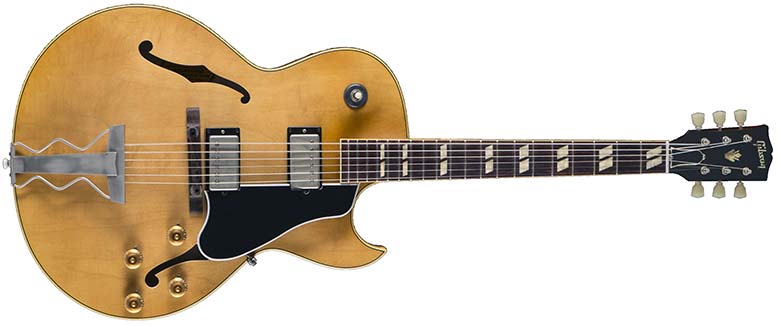Rumored Buzz on Jazz Guitar Tab
Wiki Article
The Buzz on Jazz Guitar Tab
Table of Contents4 Easy Facts About Jazz Guitar Tab Books ShownExcitement About Jazz Guitar TabsJazz Guitar Tab Fundamentals ExplainedSome Known Incorrect Statements About Jazz Guitar Books Indicators on Jazz Guitar Instruction You Need To Know
In enhancement, it keeps some of the warm, round tones that standard jazz guitars are famous for without sacrificing the sharper, much more focused sounds of a solid-body guitar. A semi-hollow body guitar is extra functional compared to a traditional jazz guitar. Semi-hollows noise "jazzier" compared to strong body guitars. They are better matched for altered audios, that's why they are used by jazz guitar players such as John Scofield as well as rock guitar players such as Dave Grohl.Nonetheless, the sounds are still extremely comparable, and also jazz musicians like Larry Carlton and John Scofield have actually traditionally preferred this guitar as their signature instrument. Gibson ES-335 1958 today The Gibson ES-335 is the guitar of legends and is a versatile model that functions extremely well for jazz as well as other styles of songs.
Since it soared onto the globe stage in 1961, this guitar sets the looks of an electric guitar with an entirely hollow body for a traditional, vintage feeling. With a light, well-articulated tone, the Casino is a thinline archtop with a distinctive form as well as an abundant background that dates back to the birth of an entire new audio on the global stage.
Some Known Factual Statements About Jazz Guitar Tab
Awesome tone as well as playability Terrific neck Great pickups Not as much resale worth as a Gibson Solid Body Guitars A strong body guitar is made entirely of a single wood block. The strings of the tool are extended above the guitar's body, as well as there are no added openings to enable noise to resemble or intensify - jazz guitar books.Among the main advantages of utilizing a strong body guitar is the dimension. Strong body guitars are smaller sized than their hollow or semi-hollow counterparts, which can make a difference to musicians who are stressed concerning doing with a tool that is too large or unrestrainable on stage. A solid body guitar has less to no responses problems.
You can utilize them in various other genres such as rock or metal, which is less the case with semi-hollow as well as definitely hollow body guitars. Solid body guitars might not have the most effective noise for jazz musicians. While there are some remarkable exemptions to this rule check (Telecaster-type guitars), a lot of musicians tend to favor the conventional warm, round tones of hollow body guitars, and a solid body guitar just can't replicate that sound.
About Jazz Guitar Tabs
Joe Pass played a Fender Jazzmaster (as well as a Fender Jaguar) when was trying to do away with a drug dependency in the Synanon Facility, possibly since that was the only guitar readily available at the facility. Since its initial launch, the Jazzmaster has undertaken some mild restorations, yet throughout the board, the noise, style, as well as tone of this guitar is significantly the like it was greater than sixty years ago (jazz guitar tabs).It has actually been in production continually because 1949.
Developed in the early 1930s, the electrical guitar came to be a requirement as jazz artists sought to magnify their audio to be heard over loud large bands. When guitarists in huge bands just had guitars, all they could do was play chords; they might not play solos because the acoustic guitar is not a loud tool.
The Best Strategy To Use For Jazz Guitar Tabs
The earliest guitars used in jazz were acoustic, later superseded by a normal electrical arrangement of 2 humbucking pick-ups. In the 1990s, there was a revival of passion among jazz guitar players in acoustic archtop guitars with floating pick-ups. The original acoustic archtop guitars were created to enhance volume: because of that they were created for use with fairly hefty guitar strings.
The denser chordal textures, in contrast, approach chord soloing (see listed below). A 3rd strategy is to preserve a steady, active bass-line, like a New Orleans pianist. Right here, why not look here no more than 2 or three notes are dipped into a time, and the complete harmony is shown by arpeggiation. Exponents of this design usually originate from a country, people or jazz background, such as Chet Atkins, although it is also often employed by straight-ahead jazz experts, for example Martin Taylor.
Report this wiki page